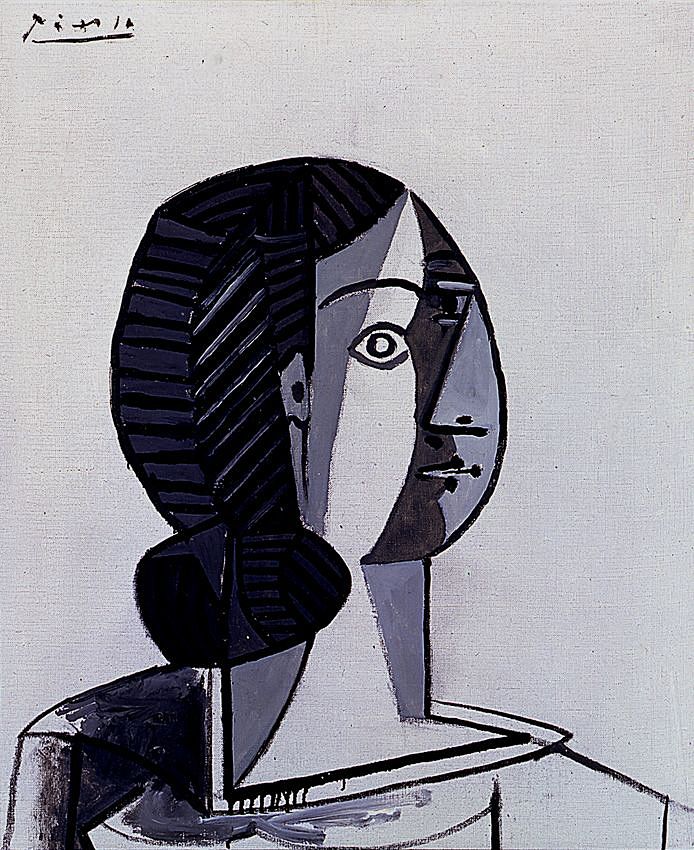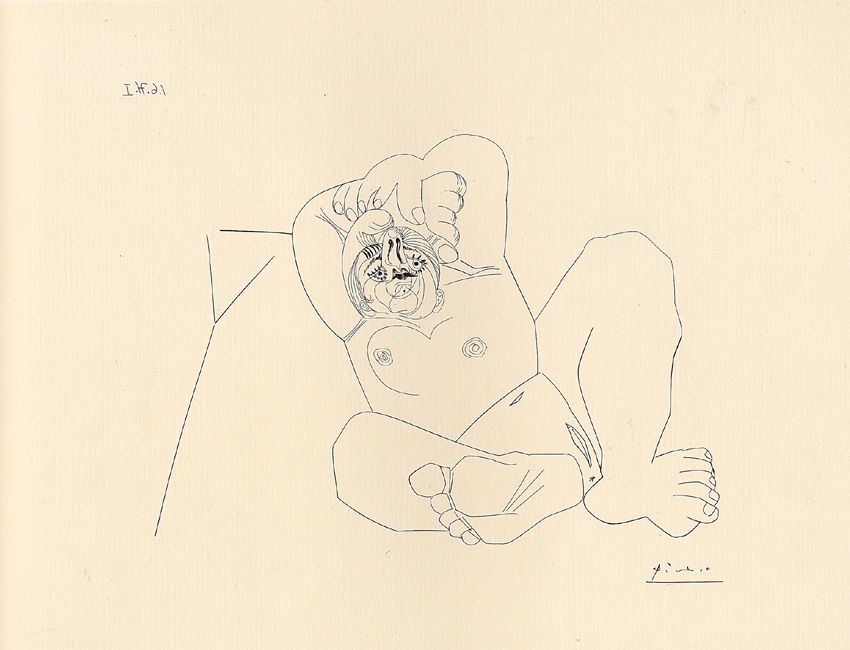Pablo Picasso

Selected Works

Pablo Picasso
Mujer de nariz grande, en escorzo, en una cama, 1971
Etching, drypoint on rives paper
36,8 x 49,6 cm
Signed, dated and numbered from an edition of 15 copies

Pablo Picasso
Tête de femme, 1953
Huile sur toile
65,4 x 54 cm
Signée en haut à gauche et datée au dos
Pablo Picasso
Mujer con tres perfiles, con camisa y botines, y mujer desnuda..., 1971
Eau-forte, pointe sèche sur papier Rives
36,6 x 49,3 cm
Signé et numéroté
Some of the works depicted are no longer available.
Biography
The artist never stopped alternating periods of radical innovation and a return to classical forms, seeking to inscribe his work in a relationship that was both modernist and monumental.
Picasso's work is divided into several significant periods: the blue period, marked by a deep melancholy, the pink period, cubism, the classical and Ingresque period, then the surrealist period, among others. The artist never stopped alternating periods of radical innovation and a return to classical forms, seeking to inscribe his work in a relationship that was both modernist and monumental.
His name is inseparable from the history of Cubism, which he developed with Georges Braque between 1906 and 1908, after discovering African art. This movement, influenced by Cézanne, proposes a representation of reality based on deconstruction and the multiplication of points of view.
